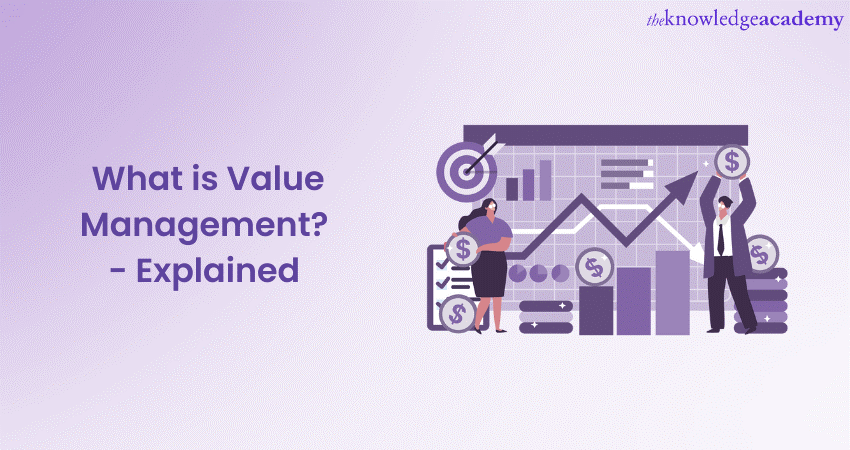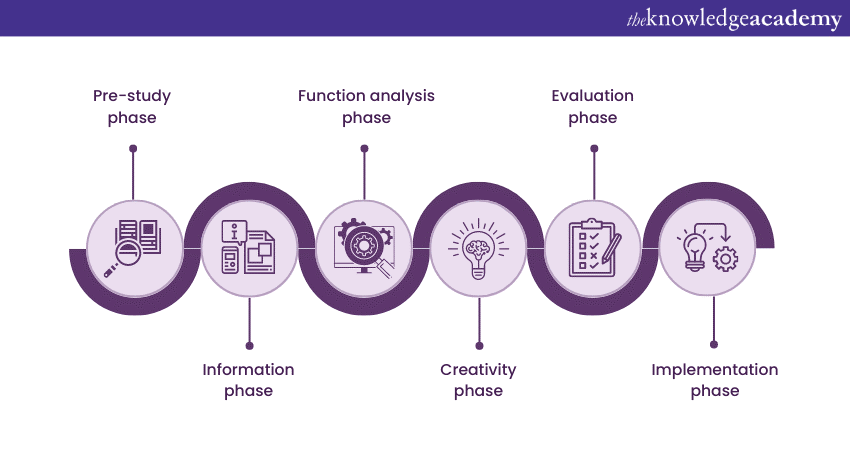We may not have the course you’re looking for. If you enquire or give us a call on 01344203999 and speak to our training experts, we may still be able to help with your training requirements.
Training Outcomes Within Your Budget!
We ensure quality, budget-alignment, and timely delivery by our expert instructors.

In today's competitive business landscape, organisations strive to achieve success by maximising their value proposition. However, understanding and effectively managing value can be a complex task. This is where Value Management comes into play. In this blog post, we will explore the concept of Value Management, its key principles, the process involved, its benefits, and its applications across various industries.
Table of Contents
1) A brief introduction to Value Management
2) Key concepts of Value Management
a) Value
b) Stakeholders
c) Objectives
d) Function Analysis System Technique (FAST)
e) Value engineering
3) he process of Value Management
a) Pre-study phase
b) Information phase
c) Function analysis phase
d) Creativity phase
e) Evaluation phase
f) Implementation phase
4) Benefits of Value Management
5) Conclusion
A brief introduction to Value Management
Value Management can be defined as a systematic and collaborative approach to understanding, defining, and delivering value to stakeholders. It involves the identification of key objectives, analysis of functions, evaluation of alternatives, and implementation of innovative solutions. Organisations can optimise their resources, improve efficiency, and enhance stakeholder satisfaction by focusing on maximising value.
Unlock your potential in managing successful projects with our MoV Foundation course - sign up now!
Key concepts of Value Management
In order to fully comprehend Value Management, it is important to understand its key concepts:
Value
Value refers to the perceived benefits or worth derived from a product, service, or process. It is a subjective measure that can differ across different stakeholders. Value can be financial, functional, emotional, or even social.
Stakeholders
Stakeholders include individuals or groups who carry an interest or are affected by the outcomes of a project or organisation. They can include customers, employees, shareholders, suppliers, and the community at large. Understanding stakeholders' needs and expectations is crucial in the management of value.
Objectives
Clear and well-defined objectives are essential in the process of managing value. Objectives provide a direction for decision-making and help prioritise efforts to maximise value. These objectives can be related to cost reduction, quality improvement, risk mitigation, or any other aspect that adds value to stakeholders.
Function Analysis System Technique (FAST)
The Function Analysis System Technique (FAST) is a powerful tool used which helps identify and analyse the functions of a system, product, or process. By breaking down complex systems into their functional components, FAST enables a comprehensive understanding of how value is generated and delivered.
Value engineering
Value engineering involves a systematic approach to identify and eliminate unnecessary costs while preserving or enhancing the desired functions and value. Value engineering encourages creativity, innovation, and cost-effectiveness in the design and development of projects.
Take your project management skills to the next level with our combined MoV Foundation & Practitioner course - sign up now and become a certified expert!
The process of Value Management
The process of Value Management typically consists of the following phases:

Pre-study phase
During the pre-study phase, the objectives and scope involved in managing value are defined. Key stakeholders are identified, and the team is formed. The pre-study phase lays the foundation for a successful Value Management process.
Information phase
In the information phase, relevant data and information are collected. This includes understanding the project requirements, studying existing systems, and gathering insights from stakeholders. The information phase ensures that decision-making is based on accurate and comprehensive data.
Function analysis phase
The function analysis phase involves breaking down the project or system into functional components. Functions are analysed to identify their contribution to value and potential areas for improvement. The function analysis phase helps in aligning the project with stakeholders' expectations.
Creativity phase
The creativity phase encourages brainstorming and the generation of innovative ideas. This phase focuses on exploring alternative solutions that can enhance value. Creative thinking and collaboration among team members are crucial in this phase.
Evaluation phase
In the evaluation phase, alternative solutions are assessed based on predefined criteria. The evaluation involves a systematic analysis of costs, benefits, risks, and other relevant factors. The goal is to select the most valuable solution that aligns with the project objectives.
Implementation phase
The implementation phase involves translating the selected solution into action. Detailed plans are developed, resources are allocated, and the necessary steps are taken to execute the solution. Regular monitoring and evaluation are essential to ensure successful implementation.

Benefits of Value Management
Implementing Value Management offers several benefits to organisations:
1) Cost savings: It helps identify cost-saving opportunities by eliminating unnecessary expenses and streamlining processes. By focusing on value-added activities, organisations can optimize their use of resources and reduce overall costs.
2) Improved project efficiency: Effective management of value enhances project efficiency by analysing functions and exploring alternative solutions. It ensures that projects are aligned with stakeholders' expectations, resulting in improved project outcomes and timely delivery.
3) Enhanced stakeholder satisfaction: Value Management focuses on meeting the needs and expectations of stakeholders. By involving stakeholders throughout the process, their concerns and feedback are addressed, leading to enhanced satisfaction and stronger relationships.
4) Risk reduction: It incorporates risk analysis and mitigation strategies. Organisations can minimise uncertainties and improve project outcomes by identifying and addressing potential risks early in the process.
5) Increased innovation: The creative and collaborative nature of managing value promotes innovation. By encouraging diverse perspectives and exploring alternative solutions, organisations can foster a culture of innovation and continuous improvement.
Conclusion
All in all, Value Management is a systematic approach that helps organisations maximise value, optimise resources, and meet stakeholders' expectations. Organisations can achieve several benefits by focusing on key concepts, utilising tools like FAST and Value Engineering, and following a structured process. While challenges may arise, embracing Value Management enables businesses to gain a competitive edge, foster innovation, and deliver superior value.
Accelerate your career in project management! Register for our comprehensive MoV Training courses today and gain the skills to excel!
Frequently Asked Questions
Upcoming Business Skills Resources Batches & Dates
Date
 MoV® Foundation
MoV® Foundation
Mon 19th Aug 2024
Mon 16th Dec 2024
Mon 24th Feb 2025
Tue 27th May 2025
Tue 26th Aug 2025
Mon 24th Nov 2025







 Top Rated Course
Top Rated Course


 If you wish to make any changes to your course, please
If you wish to make any changes to your course, please


